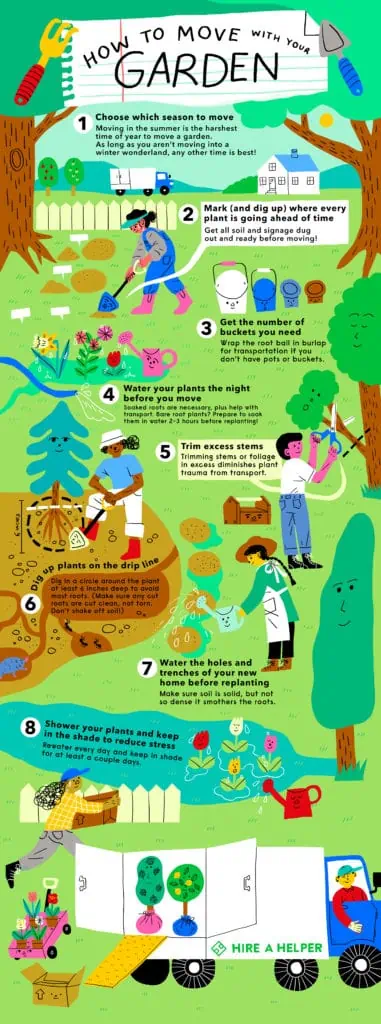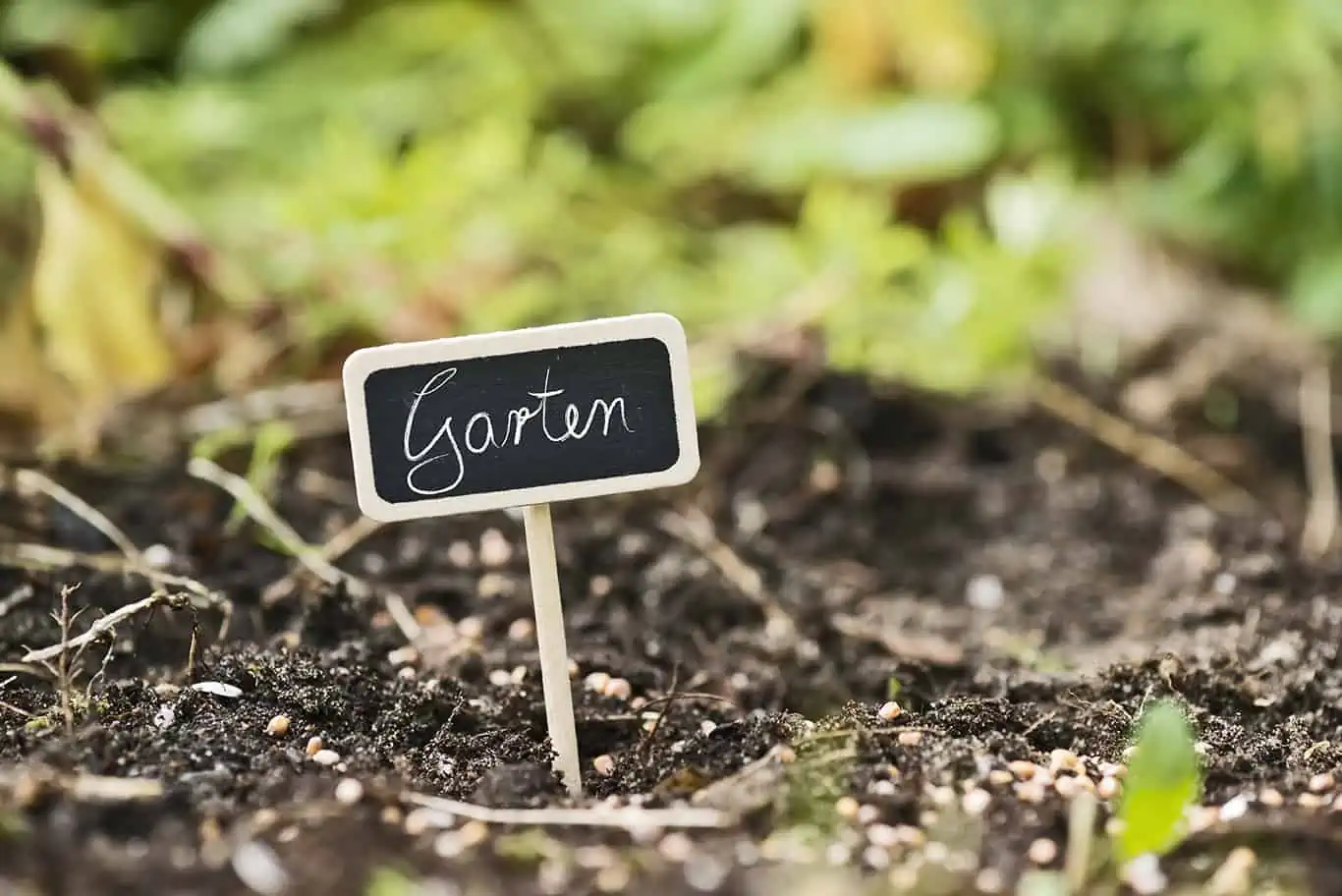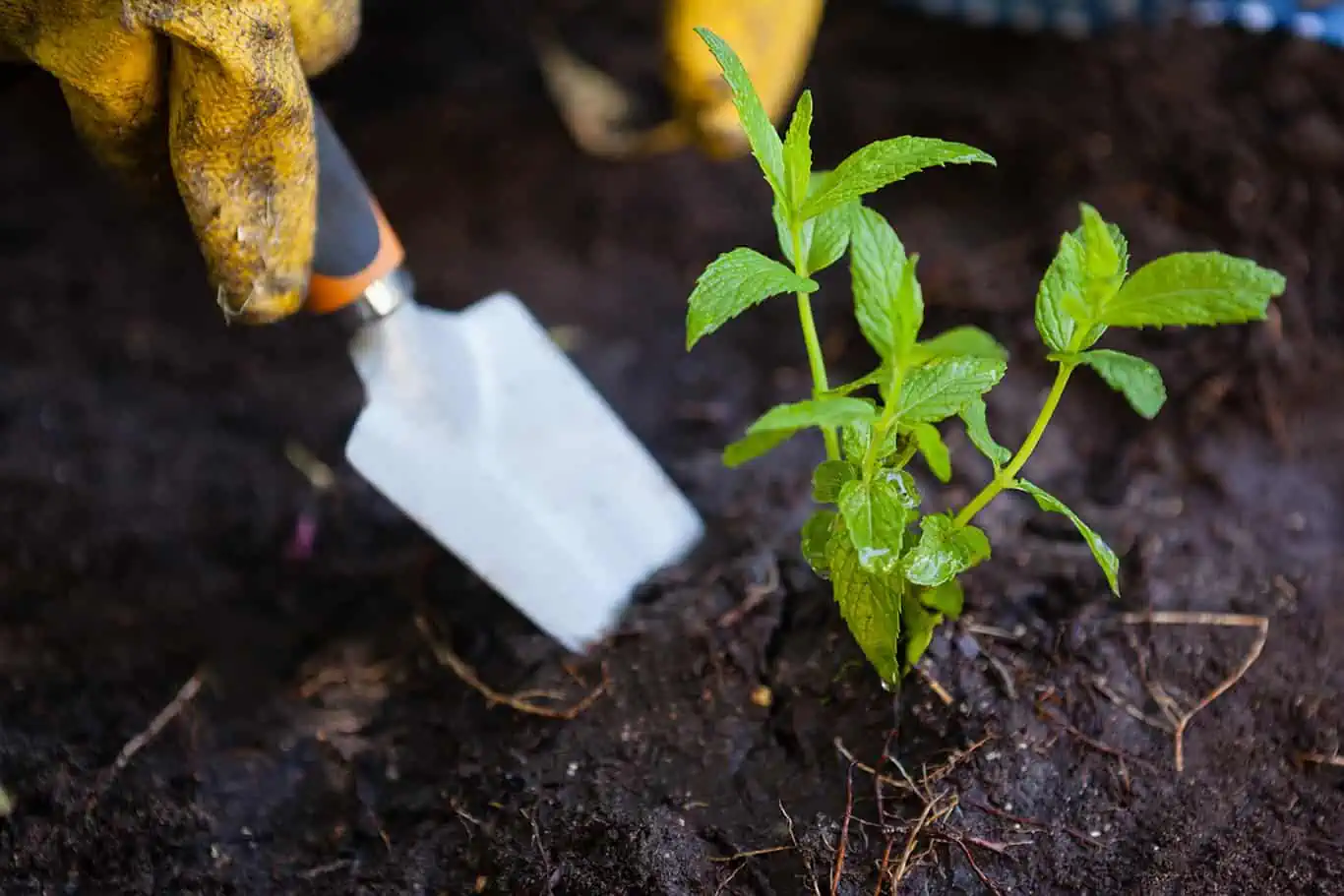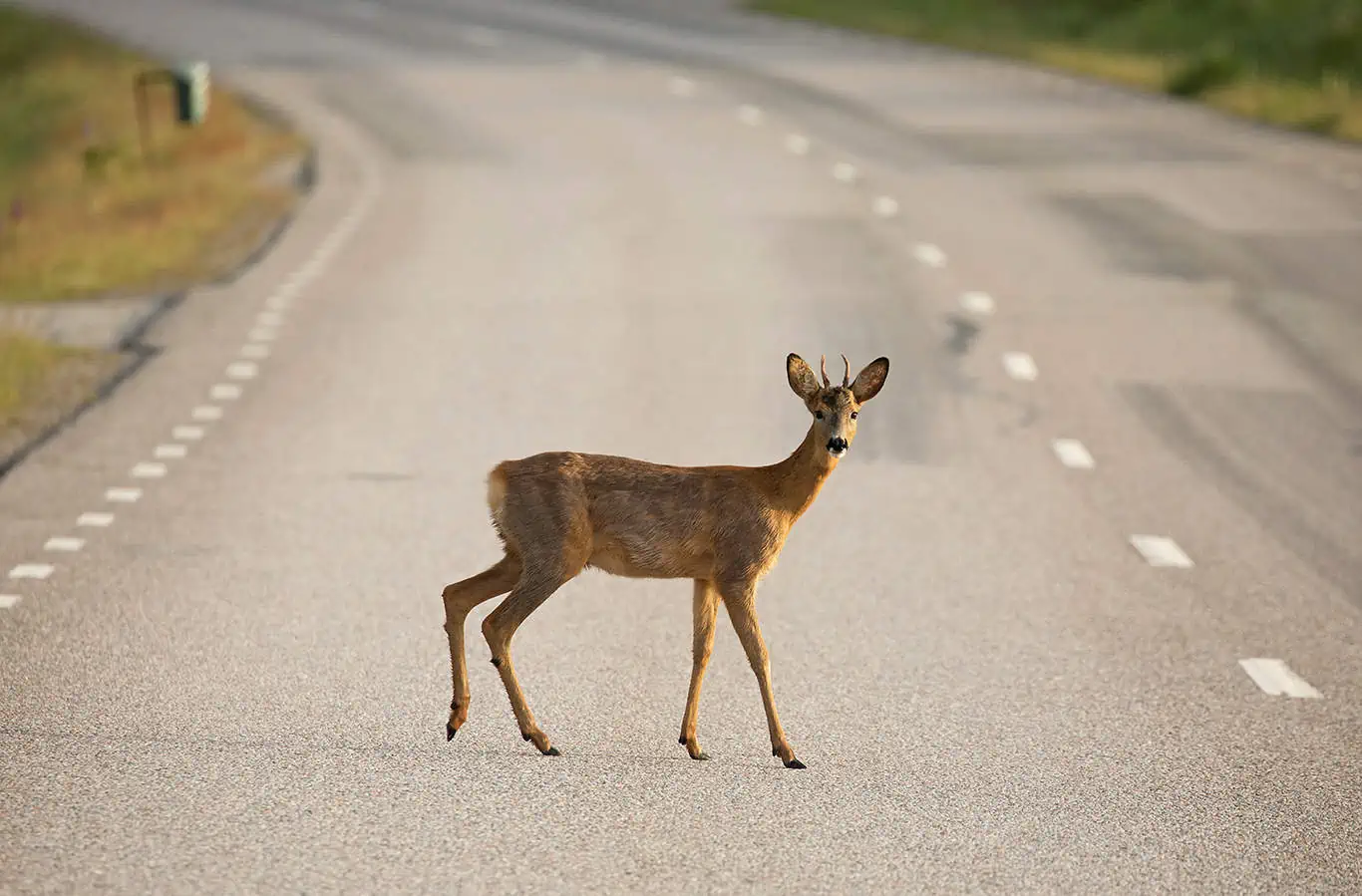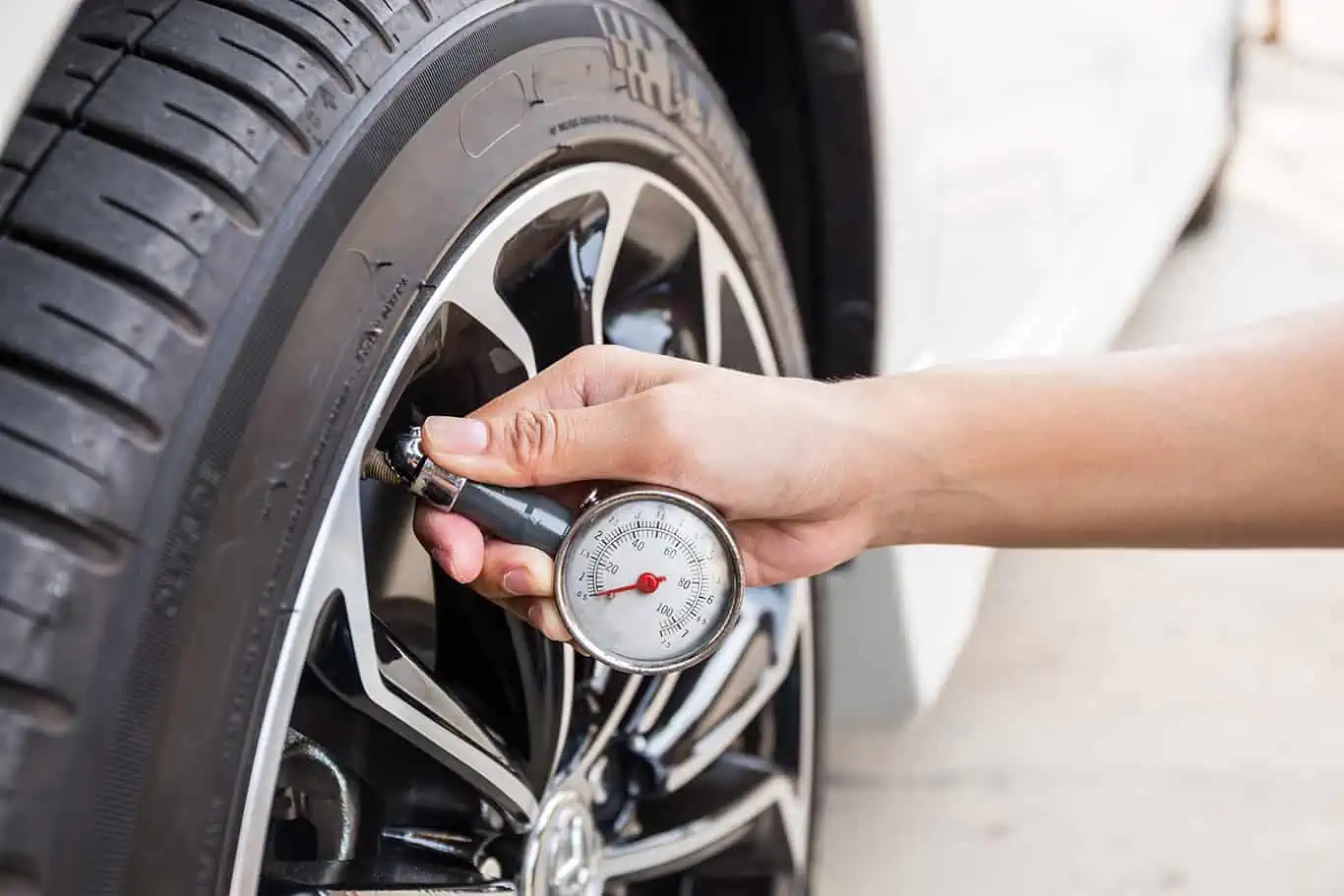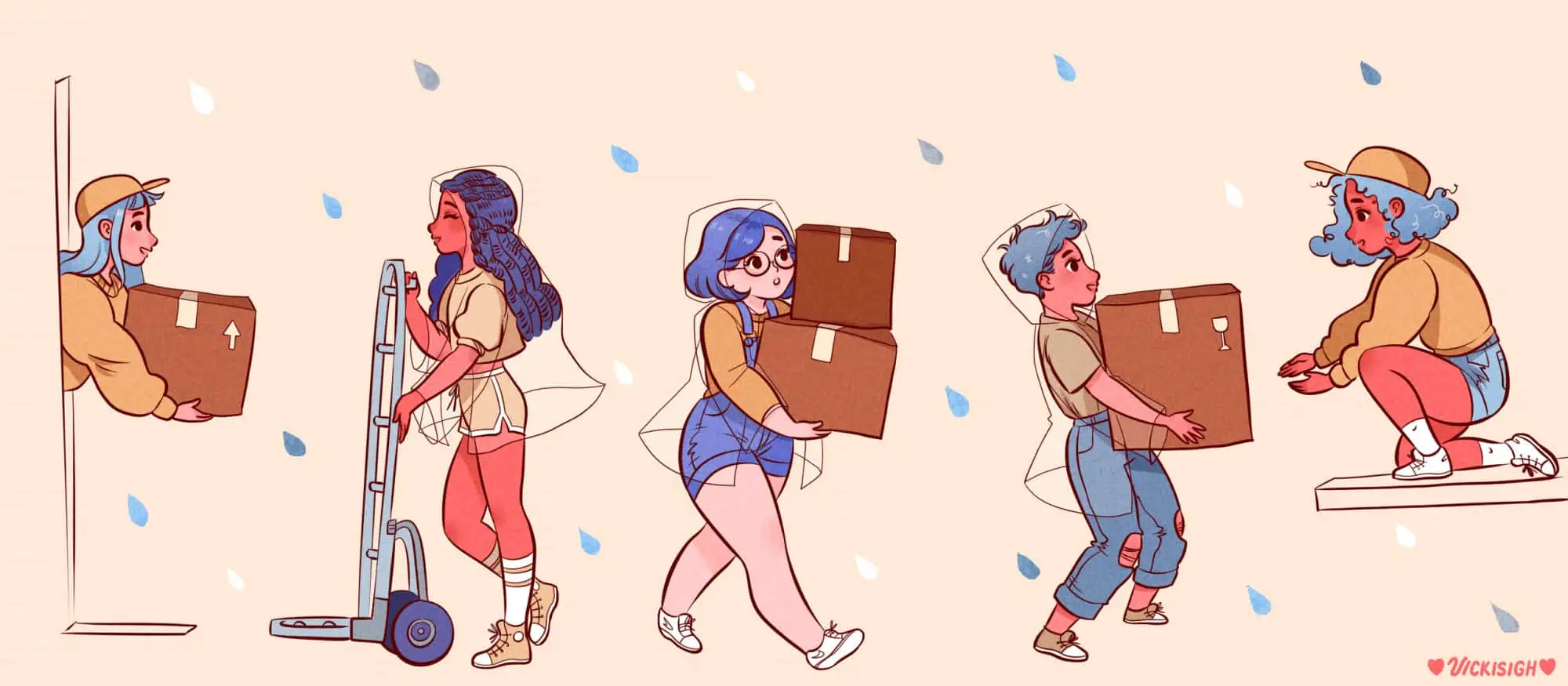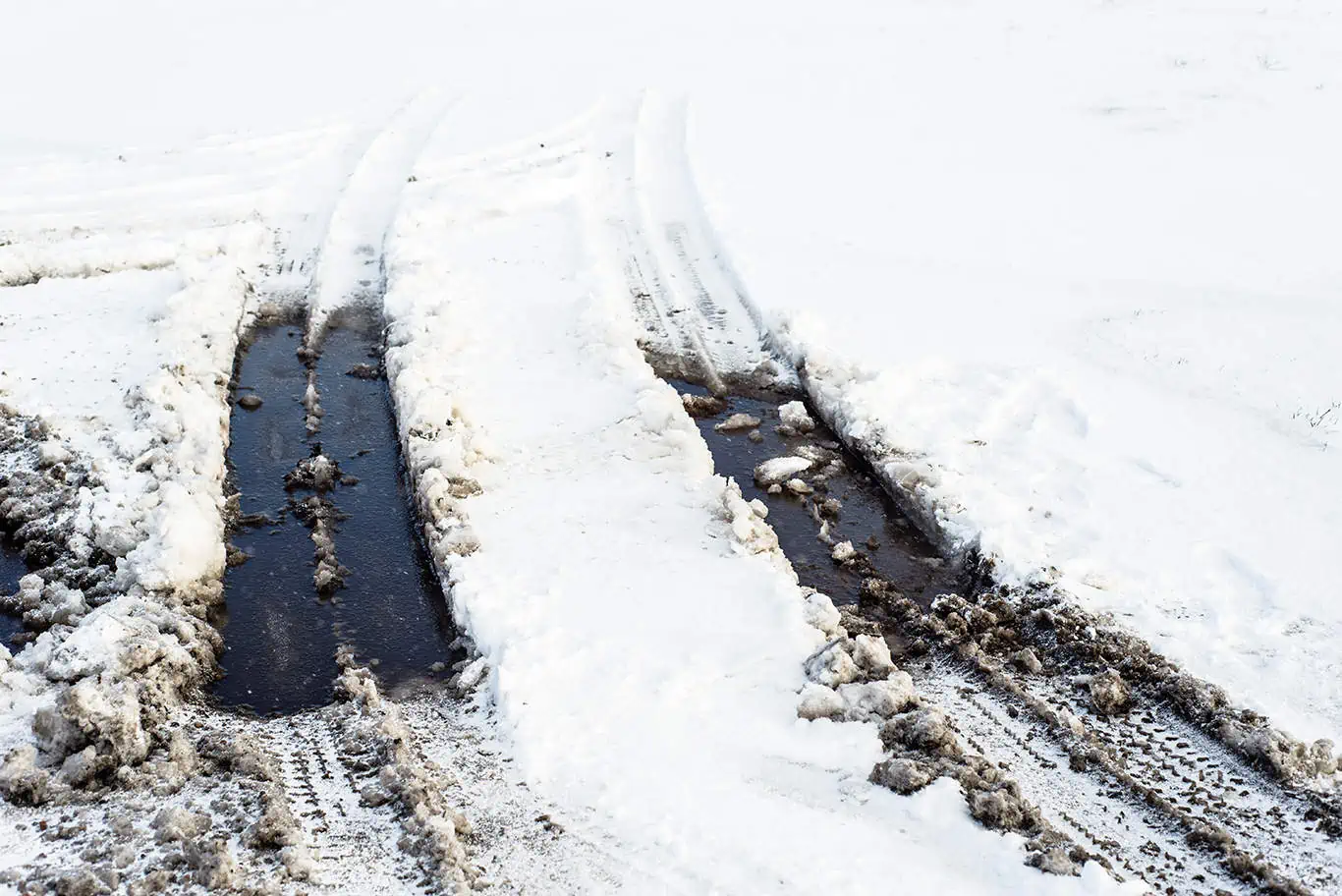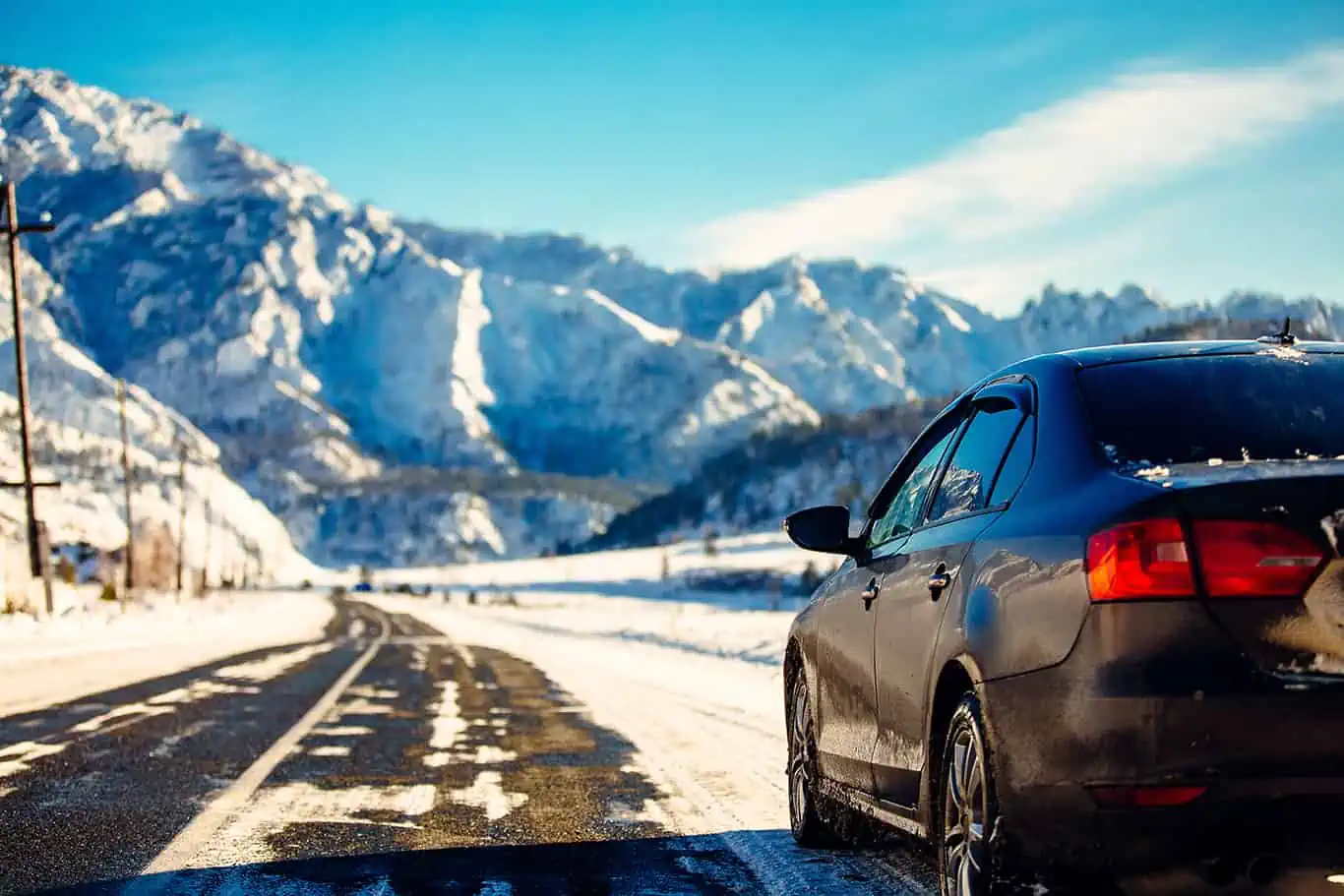Check out the How to Move Your Garden infographic below!
For moving plants long distances, check out this guide.
It’s true, just because you’re moving doesn’t mean you have to say farewell to your garden.
There is actually a myriad of reasons you might want to move your garden. Maybe you purchased a new greenhouse and want to transfer your tomatoes and other vegetables inside before fall sets in. Perhaps you just bought a new home and want to relocate your favorite perennials to the current landscape. Or maybe you simply want to place potted plants into the ground instead.
Whatever the reason, you find the need to move your garden from its present location, which is not something you should do without reading about it first. There are a lot of steps to successfully moving a garden, so get your hoes, your wheel barrels and your expandable hoses ready, folks. Let’s move!
If you are able, choose the season you move
The worst time to move a garden is in the heat of the summer. Not only is the dryness damaging to the roots, but the sun is especially hot at that time of year and direct light can cause a great deal of damage. More on this from thespruce.com:
Never leave the roots exposed to sun, heat or wind. It’s tempting to remove all plants from their pots and place them where you want them to go in the garden, but roots will desiccate quickly. Remove each plant just prior to planting.
Provided you aren’t moving into a winter wonderland, any other time is better. Of course, if you have no choice but to move your garden in the heat of summer, there are tips we will include along the way to ensure your garden’s safety.
Mark where everything is going to go first
Wherever the new location for your garden, be sure to have the spots in which you are going to plant them ready to go ahead of digging out and transplanting. In other words, visually indicate what’s going into them so things don’t get confusing. If you are planting them in bigger pots, make sure the soil is ready to go at the bottom so the transfer will be ready to go. Conversely, if you are planting directly into the ground, make sure your spots are already dug out and big enough before anything is pulled out.
If you are moving in the heat of summer, we suggest dousing these spots with water before transferring the plants. The roots will need moisture after the shock of being uprooted.
If you aren’t sure exactly where you want to plant, dig trenches and create a temporary nursery for your plants!
Here’s $25 Off Movers

Pot, bucket, or burlap: get the transportation ready

Use a special watering schedule for soon-to-be in-transit plants
It’s important during transportation that you water your plants correctly. Not to mention that watered plants are also easier to remove with the root intact.
First, you should water your garden the night before you plan on moving it so that the plants are well-hydrated for the move. This helps them sustain what’s called “the jolt of transit”.
Secondly, don’t go easy on the roots; Soak them well! If by chance you have plants with bare roots (or “naked roots”), the bottoms of these plants need to be submerged in water for two to three hours before being replanted. Here are just a few common bare-root plants to look out for:
- Shrubs
- Hosta
- Daylilies
- Roses
- Fruit trees
- Prarie Onion
Trim excess stems
It’s suggested you cut off any stems or foliage that are dying or in excess. Doing this will diminish the trauma your plant might experience. However, this isn’t universally necessary for all plants, so use your best judgment!
Dig up using the drip line
Now it’s time to dig up those plants. But you won’t want to dig into the base of the plant. Doing so risks chopping up a healthy root! Instead, take a hand shovel and dig a ring around the main stem of your plant, carefully paying attention to where the roots are positioned. This is the drip line, otherwise known as the area your plant drips onto the ground, and it’s a great method for digging up plants.
For larger plants, the ring you dig around the plant should be at least 6 inches deep. When you start digging around any size plant you will find that you will likely cut some roots on the way. This is okay, but make sure they are clean cuts, not torn.
Once the ring is dug, use a larger shovel (or several, for larger plants) to pop them out of place. Don’t shake or remove any soil from the root ball, since this will serve as protection. Put your plants into their transportation vehicles to get them ready for their final destinations!
Moving far away?
Do it cheaper.
MovingPlace can save up to 40% compared to traditional interstate moving companies. Click here to learn how.
Re-plant (the right way)
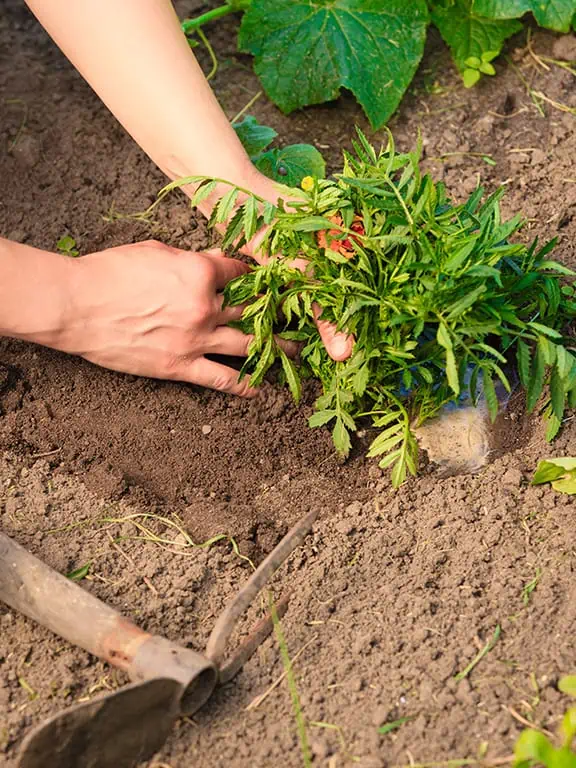
Before placing your newly removed plants in their new home, you should water the holes and trenches you’ve created. Once you placed water again, gently top the roots off with some soil. Protip: Make sure the soil is solid, but not so dense it smothers the plant.
Reduce stress on the plants
Once you have your plant in its place, give it a little shower to cool off the leaves. Provide some shade for plants planted in direct sunlight for at least a couple days. You might need to water these plants every day until they grow strong again. If you can do this gentle process in the cooler parts of the day, your plants will thank you for it. Also, if you see anything drooping, water it right away!
Check out our infographic for how to move your garden without killing your plants!
